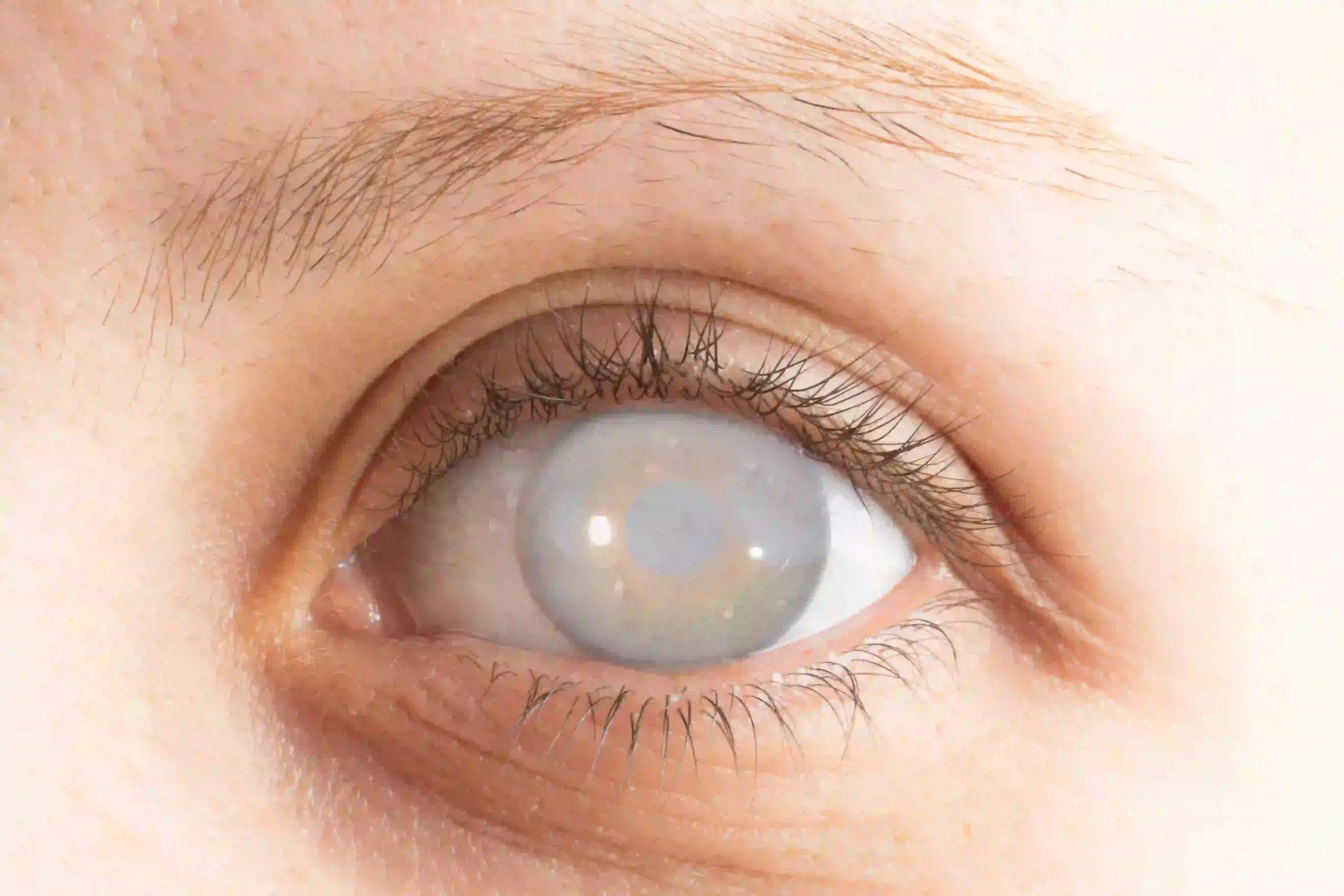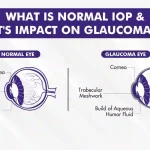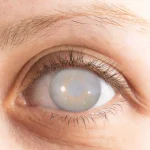Posterior Capsular Opacification (PCO) may sound like a complex terminology, but understanding its basics is easy as well as crucial for anyone who has undergone cataract surgery or giving a thought about it. Through this blog, we’ll delve into the world of Posterior Capsular Opacification causes, symptoms, treatment options, surgical techniques, and postoperative care. By the end of this comprehensive guide, you’ll have a thorough understanding of PCO, so let’s begin this journey.
What Is Posterior Capsular Opacification (PCO)?
Posterior Capsular Opacification, commonly known as PCO or secondary cataract, is an eye ailment that can develop after cataract surgery. To understand PCO, let’s first grasp the concept of cataract surgery itself. During this procedure, the cloudy lens (cataract) is delicately removed and replaced with as required artificial intraocular lens (IOL) to restore clear vision. However, post cataract surgery, the posterior capsule, a thin, transparent membrane behind the IOL, can become cloudy over time due to constant growth of cells around. This cloudiness hinders vision and that is why we refer to Posterior Capsular Opacification.
Symptoms of Posterior Capsular Opacification
Having a prior idea of the symptoms of PCO is essential for early detection and prompt cure. The major symptoms are:
- Gradual Decline in Vision Clarity:
Post-cataract surgery, a gradual decline in vision clarity may occur and blurriness develops over time, impacting overall visual acuity.
- Increased Sensitivity to Glare:
Individuals with Posterior Capsular Opacification causes are highly sensitive to glare, making it difficult to carry out tasks in bright or sunlight conditions due to light scattering caused by cloudiness in the posterior capsule.
- Difficulty Seeing in Low-Light Conditions:
Individuals may experience night vision problems, making it difficult to distinguish objects and navigate in low light environments, impacting daily activities reliant on adequate lighting.
- Changes in Color Perception:
Cloudiness occurs that may lead to a shift in color perception, with colors appearing less vibrant or of dull quality, disturbing the overall visual experience.
- Halos Around Lights:
Halos around lights, a common posterior capsular opacification symptom, often noticeable when viewing headlights or streetlights in low-light conditions.
Causes of Posterior Capsular Opacification
Till now we have understood what PCO or secondary cataract is and what are its noticeable symptoms, let’s understand its causes.
- Residual Lens Cell Proliferation:
Among all the posterior capsular opacification causes, this is the most significant one. This often occurs due to the natural healing process of the eye after cataract surgery. Post surgery, the residual lens cells remaining on the posterior capsule can grow and migrate, leading to the cloudiness characteristic.
- Age-Related Factors:
Growing age is another reason behind the occurrence of PCO. As individuals age, the cells in the eye may undergo changes that increase the likelihood of cloudiness in the posterior capsule after cataract surgery.
- Pre-existing Medical Conditions:
A few pre-existing medical conditions, such as diabetes or other ocular disorders, can amplify the risk of Posterior Capsular Opacification as well as influence the healing process.
Treatment Options for Posterior Capsular Opacification
The good news is that PCO is a treatable condition. The primary method towards treating it is a laser procedure known as YAG laser capsulotomy. Also, there is another Surgical Capsulotomy. Let’s understand how they work.
YAG Laser Capsulotomy:
YAG (Yttrium Aluminum Garnett) laser capsulotomy involves using a laser to create a small, precise opening in the cloudy posterior capsule. This opening allows light to pass through and restores clear vision. The whole process is typically an outpatient procedure and requires minimal recovery time. One of the key advantages of YAG laser capsulotomy is its non-invasiveness. There is no need for incisions, stitches, or a prolonged hospital stay. Patients can often resume their daily activities shortly after the procedure. While YAG laser capsulotomy is the most common and preferred method for treating PCO, there are instances where surgical intervention may be necessary.
Surgical Capsulotomy:
In cases where the YAG laser may not be suitable to cure Posterior capsular opacification, a surgical capsulotomy may be required. This involves making an incision in the cloudy capsule to improve vision. While surgical capsulotomy is less common due to the success of laser procedures, it remains a viable option in specific situations.
Postoperative Care for Posterior Capsular Opacification
After undergoing a YAG laser capsulotomy or surgical capsulotomy to cure secondary cataract, postoperative care becomes crucial for a successful recovery. Patients should follow these simple yet effective guidelines after PCO eye treatment to ensure optimal healing:
Use Prescribed Eye Drops:
Follow the prescribed eye drops to prevent infection, reduce inflammation, and promote healing. These drops play a crucial role in maintaining eye health during the initial postoperative period.
Rest and Avoid Strain:
Give your eyes adequate rest during the initial days following the procedure. Avoid activities that may strain your eyes, such as heavy lifting, prolonged screen time, or exposure to bright lights. Adequate rest allows the eyes to heal and adapt to the changes introduced during the intervention.
Attend Follow-up Appointments:
Regular follow-up appointments with your eye care professional are essential to monitor your recovery and address any concerns..
Report Any Unusual Symptoms:
While discomfort and mild fluctuations in vision are normal after a YAG laser capsulotomy or surgical capsulotomy, it’s essential to report any unusual or severe symptoms to your eye care professional. This may include persistent pain, sudden changes in vision, or signs of infection.
Protect Your Eyes:
Shield your eyes from direct sunlight and dust by wearing sunglasses, especially during the first few days after the procedure. This helps prevent irritation and promotes a smooth recovery.
By adhering to these postoperative care guidelines, patients can contribute to a smoother recovery process and optimize the outcomes of their PCO eye treatment.
Emerging Technologies in PCO Eye Treatment
As technology continues to advance, new and innovative approaches to PCO treatment are being explored. Researchers are investigating the use of drug-eluting intraocular lenses and other pharmacological interventions to prevent or reduce the occurrence of PCO. These developments hold promise for further improving the long-term success of cataract surgery and minimizing the risk of PCO.
What Are the Risk Factors for a Posterior Capsular Opacification?
Posterior capsule opacification (PCO), can develop after cataract surgery. The primary risk factor is the natural healing of the eye after the surgery. Other factors that may increase the risk include age, pre-existing medical conditions like diabetes, and certain surgical techniques. It’s essential to follow post-operative care instructions and attend follow-up appointments to monitor and address any issues that may arise. If you’ve had cataract surgery and have concerns, it’s always a good idea to discuss them with the best eye care professional.
Conclusion
In conclusion, understanding Posterior Capsular Opacification or Secondary Cataract is vital for those who have undergone cataract surgery or are planning to do so. Recognizing the symptoms, understanding the causes, and being aware of the available treatment options empower individuals to make informed decisions about their eye health.
Ultimately, the journey towards clearer vision involves collaboration between patients and their healthcare providers. By staying informed, proactive, and committed to postoperative care, individuals can navigate the path to optimal eye health and a brighter, clearer future. In case you come across any eye issue, feel free to reach Centre For Sight – we are a one stop solution for all kinds of eye care services, like contoura vision, ICL Surgery, etc.
FAQs
What treatment options are available for managing PCO and regaining clear vision?
Treatment options for managing PCO (Posterior Capsule Opacification) and regaining clear vision include a simple and effective procedure called YAG laser capsulotomy, which removes the cloudy capsule that forms after cataract surgery. Also, there is a surgical capsulotomy.
Can Posterior Capsular Opacification be prevented?
Posterior Capsular Opacification can be prevented through a laser procedure called YAG laser capsulotomy. Regular eye exams and prompt treatment of any changes in vision also contribute to prevention.
Can Posterior Capsular Opacification go away?
Posterior Capsular Opacification, also known as secondary cataract, can be treated with a simple and quick laser procedure called YAG laser capsulotomy. This outpatient procedure effectively clears the cloudy membrane, restoring clear vision in most cases.
Can posterior capsular opacification return?
Yes, posterior capsular opacification (PCO) can potentially return after cataract surgery. This occurs when the back membrane of the lens becomes cloudy again, leading to visual disturbances. However, it can be addressed through laser surgery.
What are the symptoms of Posterior Capsular Opacification?
The major symptoms of Posterior Capsular Opacification are gradual decline in vision clarity, increased sensitivity to glare, difficulty seeing in low-light conditions, or changes in color perception.
How Common Is PCO?
Posterior capsular opacification is a common complication following cataract surgery, occurring in a significant number of cases.
How long after cataract surgery can posterior capsular opacification occur?
Posterior capsular opacification (PCO) can occur months to years after cataract surgery. It typically develops gradually.
What are the common symptoms of PCO, and how can I recognize them?
If any individual comes across problems like gradual decline in vision clarity, increased sensitivity to glare, difficulty seeing in low-light conditions, or changes in color perception, he/she should contact.
Why does PCO occur after cataract surgery?
Posterior capsule opacification (PCO) can occur after cataract surgery due to the growth of epithelial cells left behind during the procedure. These cells cause clouding of the posterior capsule and affecting vision.
What are posterior capsular opacification types?
Posterior capsular opacification (PCO) types include fibrosis, Elschnig pearls, and Soemmering’s ring.







